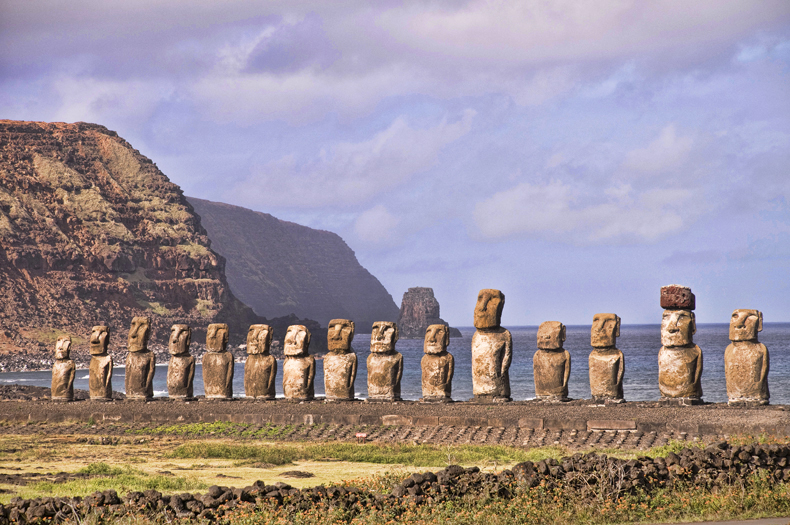
The definitive history of Easter Island will probably never be written. Many versions of the truth have arisen from the archaeological shards of the 19th century, and there is much scholarly fussing.
By the time of discovery by the Dutch on Easter Sunday of 1722 the oral history had mostly vanished to the ages. What they "discovered" were embattled Stone Age clans engaged in constant warfare and practicing slavery and cannibalism. Most lived in makeshift caves hacked out of hillsides, a few in flimsy reed huts. These natives had no clue about the great monuments and statuary that lay scattered about their tiny cosmos and which told of a glorious past.
If any bit of historical truth had survived the pre-European turmoil it would have been doomed by what followed. The death knell to Easter Island culture was dealt by European small pox and Peruvian slave traders in the century following "discovery." The native islanders were decimated. As few as a hundred wretched souls survived from a population of several thousand. Gone were chiefs and scholars as well as rongorongo, the only form of Polynesian writing ever discovered.
So we are left to sift through the science, of rocks, petroglyphs, and pollen, to piece together a piecemeal truth. The lessons of Easter Island come hard. Sweeping conclusions are born and die with each new discovery. And yet they abound. What follows is a simplistic account of what may have happened to Polynesia's most advanced statement. It most assuredly contains elements of truth as well as myth. (continued with next photograph)
© Danny Kimberlin 2015